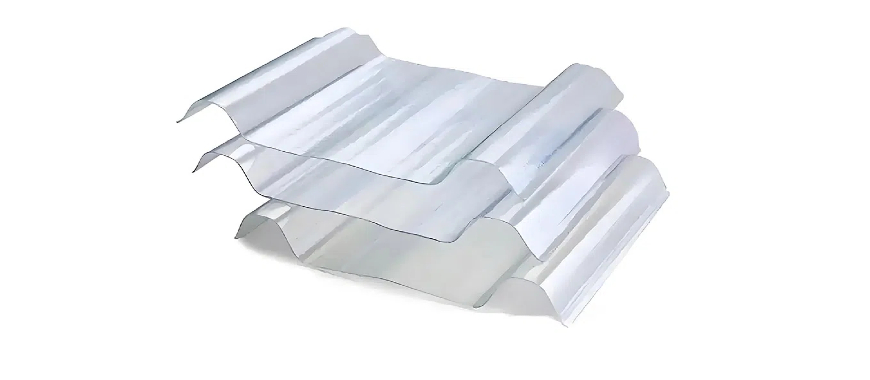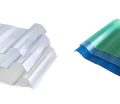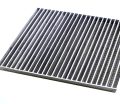
Fibreglass has become a highly durable and modern option for porch roofing, thanks to its impressive resistance to wear and tear. The fibreglass porch roof is gaining popularity among homeowners due to its longevity and minimal maintenance requirements. This material is especially favored for residential roofs where protection from harsh weather conditions is essential. Common uses include fibreglass porch roofs and decks, where durability and versatility make it an ideal choice. Its lightweight nature allows for easy installation, making it suitable for various architectural designs.
Advantages of Fibreglass Porch Roofs
Durability
One of the biggest advantages of a fibreglass porch roof is its durability. Fibreglass materials are built to withstand harsh weather conditions, including heavy rain, snow, and strong winds. With proper installation, a fibreglass porch roof can last over 25 years, providing long-term protection. This longevity makes it a cost-effective investment, saving homeowners from frequent repairs or replacements.
Versatility
A fibreglass porch roof offers great versatility, making it suitable for various porch designs, including both simple and complex structures. Whether you have a traditional or modern porch, fibreglass can be customized to fit different shapes and sizes. It can also be used on lightweight roofs or even green roofs, making it ideal for eco-friendly designs. This flexibility allows homeowners to design their porch without being limited by material constraints.
Low Maintenance
Another key benefit of a fibreglass porch roof is its low maintenance requirements. Unlike traditional materials like wood, fibreglass is resistant to rot, mold, and corrosion. This resistance means that once installed, it requires minimal upkeep, significantly reducing the need for regular cleaning or repairs. Fibreglass is also impervious to insects and pests, which can further prolong the life of your roof and save on maintenance costs.
Weather Resistance
The fibreglass porch roof is highly weather-resistant, making it an ideal option for areas that experience fluctuating temperatures. It is built to endure UV rays without cracking or fading, which helps maintain its appearance over time. Additionally, fibreglass is waterproof, providing an effective barrier against leaks and moisture damage. This weatherproofing is crucial for porches that are frequently exposed to the elements.
Aesthetic Appeal
Beyond its practical benefits, a fibreglass porch roof also offers aesthetic advantages. Fibreglass is available in a range of finishes and colors, allowing homeowners to choose a style that complements their home’s exterior. Whether you prefer a sleek, modern look or a more traditional design, fibreglass can be tailored to suit your preferences. This visual versatility adds curb appeal and can enhance the overall value of your property.
A fiberglass porch roof combines durability, versatility, low maintenance, weather resistance, and aesthetic appeal, making it an excellent choice for homeowners looking to invest in a long-lasting and attractive porch roofing solution.
Why Choose GRP Box Profile Roofing Sheets?
Installation Process for Fibreglass Porch Roof
Step-by-Step Process for Fibreglass Porch Roof Installation
Installing a fibreglass porch roof requires careful planning and attention to detail to ensure long-lasting performance. The installation process begins with preparing the porch surface. Any existing roof material must be removed, and the surface should be cleaned thoroughly. It’s important to check the base for any signs of damage or unevenness before proceeding.
Once the surface is ready, a timber decking layer, often plywood or OSB, is applied to provide a solid base for the fibreglass roof covering panels. This decking is securely fixed in place to prevent movement. After the base is installed, a layer of fibreglass matting is rolled over the surface. The matting should be evenly spread, ensuring it covers the entire area without gaps. The matting is then bonded to the decking using a specially formulated resin. It is essential to work quickly during this step, as the resin begins to set within a short time.
Once the fibreglass matting is securely attached, another layer of resin is applied over the top to ensure complete saturation of the fibreglass. This forms a waterproof seal that is crucial for the porch roof’s longevity. After the resin has cured, a topcoat is applied, which provides additional weatherproofing and gives the roof its final appearance. This topcoat can be customized in different finishes and colors to match the homeowner’s aesthetic preferences.
Importance of Using Appropriate Fibreglass Roof Panels and Materials
Using the right materials is critical for the success of a fibreglass porch roof installation. The fibreglass roof panels, resin, and matting must be designed specifically for roofing applications to ensure durability and water resistance. Substandard materials can lead to issues such as cracking, water penetration, and a shorter lifespan for the roof.
It is also important to choose a high-quality topcoat, as this layer is the first line of defense against UV rays, rain, and debris. The topcoat protects the underlying layers from wear and tear, ensuring that the fibreglass porch roof remains in good condition for many years. Properly selected materials not only extend the lifespan of the roof but also minimize the need for repairs or maintenance.
Weather Considerations During Installation
Weather conditions play a significant role in the installation of a fibreglass porch roof. The resin used during the process requires specific temperature and moisture levels to cure properly. Ideal conditions include dry weather and moderate temperatures, typically between 10°C and 25°C. Installing a fibreglass roof in humid or rainy conditions can result in improper curing, which could compromise the roof’s durability and water resistance.
Additionally, high winds can cause issues during installation, as the fibreglass matting and panels may be difficult to secure. It is recommended to plan the installation during a period of stable weather. If installation must be done during less-than-ideal conditions, it is crucial to use protective coverings to shield the materials from moisture and debris.
To successful fitting a fibreglass roof of porch installation depends on thorough surface preparation, the use of high-quality materials, and weather-appropriate timing. Following the step-by-step process ensures that the porch roof will offer long-lasting protection and minimal maintenance for homeowners.
Fiberglass Decks and Roofs: Sustainable Building Solutions
Cost Considerations for a Fibreglass Porch Roof
Overview of Fibreglass Porch Roof Cost Compared to Traditional Materials
A fibreglass porch roof typically costs more than traditional roofing materials like asphalt or felt. However, the long-term durability and low maintenance often offset the initial higher expense. Unlike some alternatives, fibreglass offers a lifespan of 25 years or more, making it a valuable investment.
Breakdown of Related Costs
The cost of a fibreglass porch roof includes multiple factors:
- Fiberglass roof deck cost: The decking material is crucial for the roof’s base.
- Fiberglass deck coating: A high-quality resin and topcoat will add to the cost. Resin prices vary, averaging $50–$100 per gallon, and the topcoat typically ranges from $30 to $70 per gallon. Coating the deck ensures waterproofing and long-lasting protection.
Factors Influencing the Overall Pricing
Several factors can impact the total cost of a fibreglass porch roof:
- Labor costs: Skilled labor for fibreglass roofing installation can be higher due to the expertise required. On average, labor costs range from $50 to $100 per hour, depending on the region and the complexity of the job.
- Material quality: Opting for high-quality fibreglass panels and resin will raise the price but also ensures better longevity and performance.
- Roof size and design complexity: Larger or more intricate roof designs will require additional materials and labor, further increasing costs. For example, complex shapes or green roof integrations can add to the final pricing.
While a fibreglass porch roof may have a higher upfront cost compared to traditional materials, the long-lasting durability and minimal maintenance make it a worthwhile investment for homeowners seeking a reliable roofing solution.
Repair and Maintenance of a Fibreglass Porch Roof
How to Handle Minor Repairs on Your Own
Maintaining a fibreglass porch roof is relatively simple. Minor repairs, such as small cracks or surface damage, can be handled by homeowners with basic tools. To begin, clean the damaged area thoroughly to remove dirt and debris. Apply a layer of fibreglass resin over the crack or damaged spot, ensuring the area is well-covered. Once the resin cures, you can apply a topcoat to seal the repair. This process is straightforward and doesn’t require extensive technical knowledge.
When to Consult Professionals for Larger Repairs or Re-Coating
For more significant issues, such as deep cracks, large areas of damage, or full re-coating, it’s essential to hire a professional. Major repairs often involve reapplying layers of fibreglass matting and resin, which require expertise to ensure proper bonding. If the fibreglass porch roof is nearing the end of its lifespan or shows widespread wear, a professional re-coating service can restore its waterproofing properties and extend its durability. Attempting these tasks without proper training may result in further damage.
In addition, if the roof has suffered damage due to extreme weather conditions or structural issues, it’s advisable to consult a specialist. Professionals can assess the full extent of the damage and determine whether repairs or replacement are necessary, ensuring the roof’s integrity is fully restored.
How Fireproof Fiberglass Insulation Enhances Fire Safety
The Benefits and Considerations of a Fibreglass Porch Roof
A fibreglass porch roof provides numerous benefits, including exceptional durability, low maintenance, and versatility in design. Its weather resistance makes it ideal for a variety of climates, and it can last over 25 years with minimal upkeep. However, the cost may be higher than traditional materials, and installation requires dry conditions.
When making a decision, consider factors such as your budget, the climate in your area, and the long-term durability required. Consulting with professionals can help ensure that a fibreglass porch roof meets your specific needs.
FAQs about Fibreglass Porch Roof
Fibreglass roofing has a few downsides. One major disadvantage is the initial cost, which tends to be higher than other roofing materials, like asphalt or rubber. Additionally, fibreglass is not ideal for large roof areas due to its high expansion and contraction rates, which can cause cracks over time. Installation is also weather-dependent, requiring dry conditions for proper curing. Without proper care during installation, the roof’s longevity and performance may be compromised.
Yes, fibreglass is an excellent option for roofing, especially for porches and smaller structures. It offers durability, weather resistance, and low maintenance compared to traditional materials. Fibreglass roofs can withstand heavy rain, snow, and UV rays without deteriorating. Additionally, fibreglass is lightweight, which makes it easier to install in various designs and shapes. Its ability to resist rot, rust, and pests further enhances its appeal for long-term use.
A properly installed fibreglass roof can last over 25 years with minimal maintenance. The material’s resistance to water, UV rays, and temperature fluctuations contributes to its long lifespan. Unlike other roofing materials, fibreglass does not degrade or corrode over time, which helps maintain its integrity. However, proper installation and regular inspections are essential to ensure it remains in good condition for decades.
Yes, fibreglass can be used for roofing and is becoming increasingly popular for porches, extensions, and smaller structures. Its waterproof and lightweight nature makes it an excellent roofing material. Fibreglass can also be molded to fit different shapes and sizes, making it suitable for roofs with unique designs. Moreover, it requires minimal maintenance and offers long-lasting protection against weather elements, making it a practical choice for homeowners.

As the editor of GangLong Fiberglass, I have years of experience and in-depth research, focusing on cable tray products, fiberglass solutions, and grille systems. I incorporate years of industry insights and practical experience into every content, committed to promoting the progress of the industry. At GangLong Fiberglass, my commitment is reflected in every product, from innovative cable trays to durable fiberglass solutions and sturdy grille systems. As an authoritative voice in the industry, my goal is to provide valuable information to professionals and businesses and promote forward-looking solutions.


